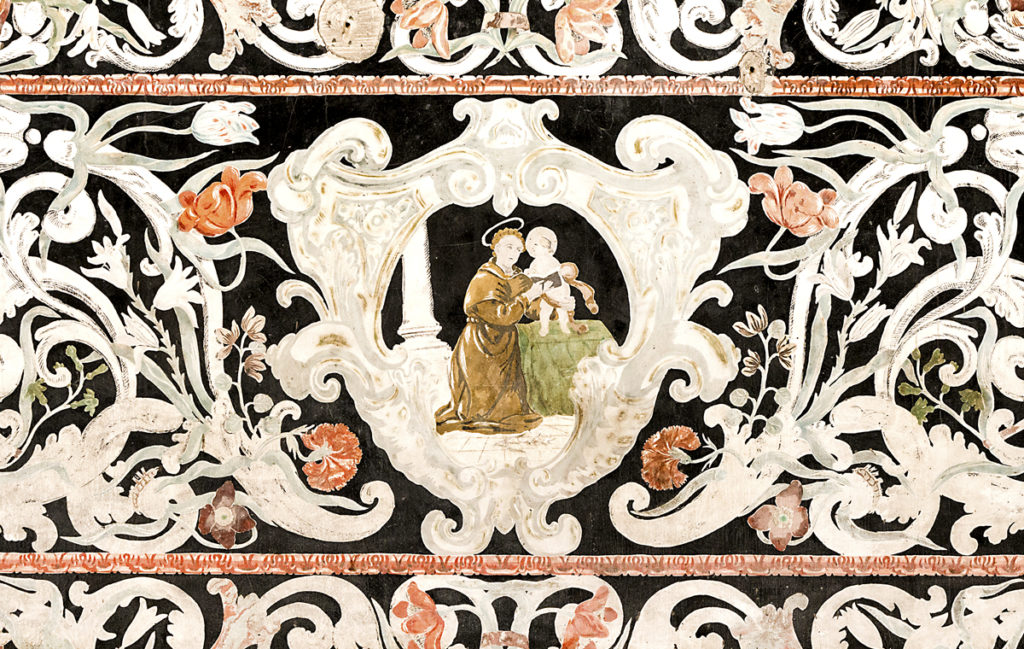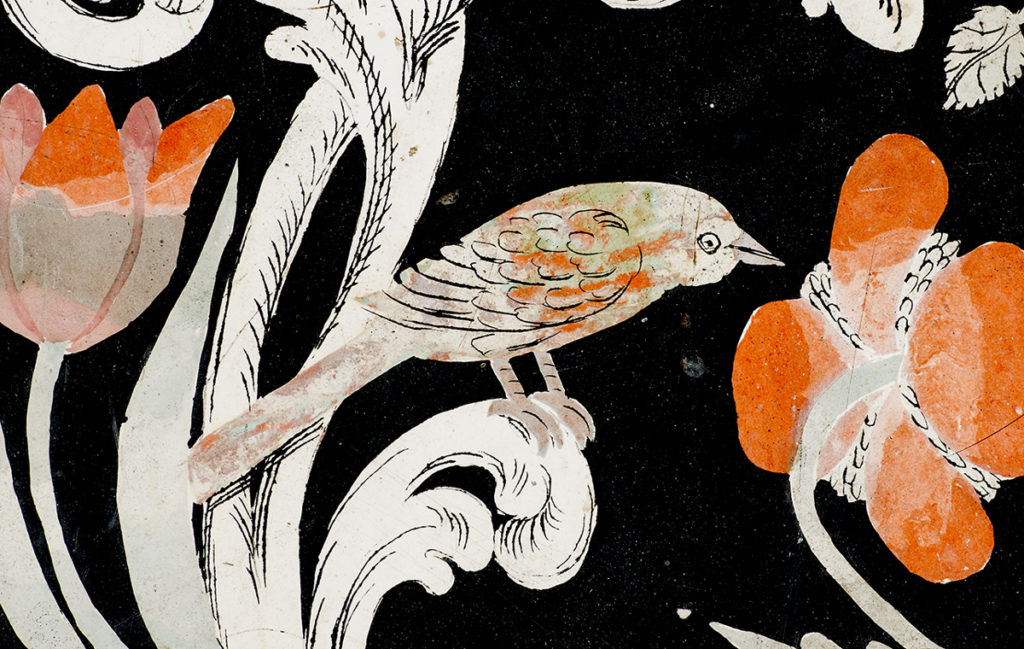© Photos by Stefano Semenzato excerpt from the book: Tra cinquecento e settecento. Capolavori svelati nelle chiese di Capugnano e Castelluccio.
THE INLAID ALTARS OF THE CHURCH OF SAN MICHELE ARCANGELO IN CAPUGNANO
In Capugnano there are a series of 6 paliotti, art masterpieces based on inlaid scagliola that is composed of plaster, animal glues, pigment and marble dust.
The Capugnano paliotti are characterized by extremely imaginative designs: birds, flowers, insects, snakes, motifs with very bright colors and well outlined on the black background, able to create a harmonious decorative space, all of which have only one small central field, inside which is placed the figure of the saint to whom the altar is dedicated. Animals, insects, snakes, flowers have a very precise liturgical meaning and must be interpreted in a symbolic way according to the dictates of the Church.
The word paliotto indicates the decorative covering of the altar front. In the Middle Ages it was normally made of cloth or removable canvases. In this case the technique is inlaid scagliola with fixed structures integrated into the body of the altar.
The coloring of the stucco with pigments is the characterizing element of the marble imitation coating techniques.
The predominant color, used to make the superficial layer of the frontals, is black; the mixture of gypsum and glue was painted with carbon-black, a stable pigment used in all ages.
A detailed photographic description of the churches of Capugnano and Castelluccio, enriched with many historical references and a historical art essay on the works and churches of the Reno valley, is represented in the book “ Tra cinquecento e settecento. Capolavori svelati delle chiese di Capugnano e Castelluccio”.











